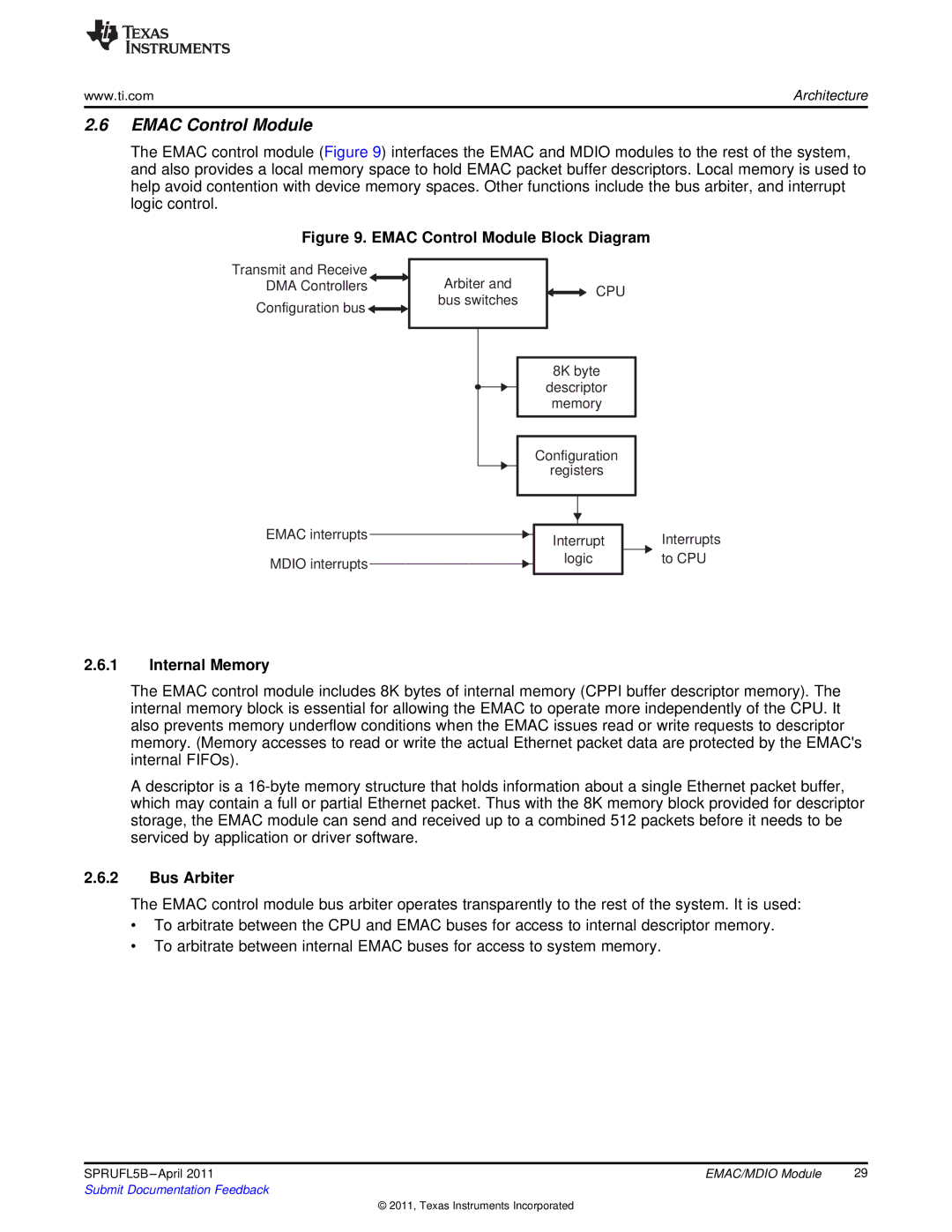
www.ti.com | Architecture |
2.6EMAC Control Module
The EMAC control module (Figure 9) interfaces the EMAC and MDIO modules to the rest of the system, and also provides a local memory space to hold EMAC packet buffer descriptors. Local memory is used to help avoid contention with device memory spaces. Other functions include the bus arbiter, and interrupt logic control.
Figure 9. EMAC Control Module Block Diagram
Transmit and Receive DMA Controllers
Configuration bus ![]()
![]()
EMAC interrupts
MDIO interrupts
Arbiter and |
|
| CPU |
bus switches |
|
| |
|
|
| |
|
|
|
|
8K byte
descriptor memory
Configuration
registers
|
|
|
|
| Interrupts |
| Interrupt |
|
| ||
| logic |
|
| to CPU | |
|
|
|
|
|
|
2.6.1Internal Memory
The EMAC control module includes 8K bytes of internal memory (CPPI buffer descriptor memory). The internal memory block is essential for allowing the EMAC to operate more independently of the CPU. It also prevents memory underflow conditions when the EMAC issues read or write requests to descriptor memory. (Memory accesses to read or write the actual Ethernet packet data are protected by the EMAC's internal FIFOs).
A descriptor is a
2.6.2Bus Arbiter
The EMAC control module bus arbiter operates transparently to the rest of the system. It is used:
•To arbitrate between the CPU and EMAC buses for access to internal descriptor memory.
•To arbitrate between internal EMAC buses for access to system memory.
SPRUFL5B | EMAC/MDIO Module | 29 |
Submit Documentation Feedback |
|
|
© 2011, Texas Instruments Incorporated
